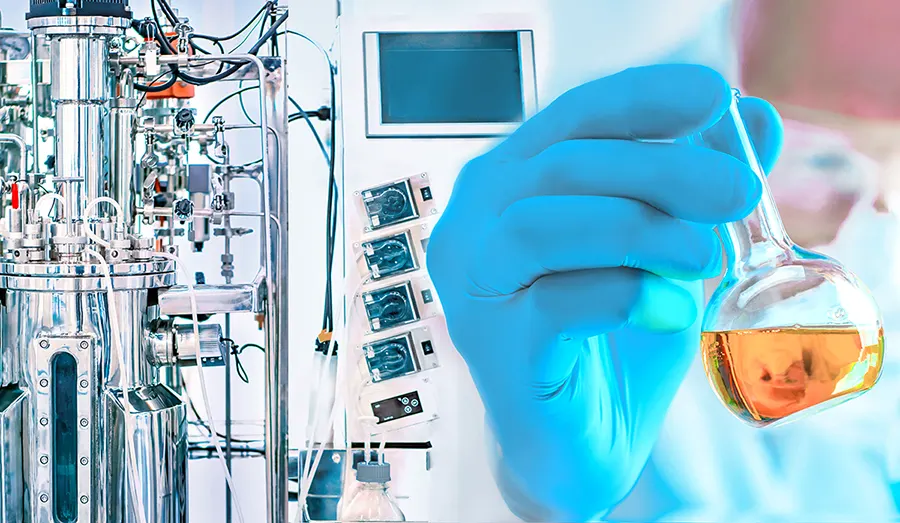Fast Global Vaccine Delivery via Reduced Bioreactor Footprint

In the United States, 14 diseases which used to be deadly (such as diphtheria and measles) are now nearly eliminated. However, they are much more prevalent in countries that have been unable to carry out rigorous vaccination campaigns.
Inability to carry out these vaccination campaigns is most often due to the prohibitively high costs of the vaccines. When vaccines are manufactured more cheaply, they can be distributed globally at much lower costs — furthering disease eradication everywhere.
Plant footprint correlates closely with manufacturing costs
Space is a precious commodity, particularly in GMP cleanroom facilities. Reducing the footprint of bioreactors and various other pieces of equipment can have far‑reaching benefits — ultimately cheaper and more widespread distribution of vaccines.
In any context, reducing footprint reduces the overall cost of goods, leading to more efficient and cost‑effective setups. For upstream setups, bioreactor footprint can be greatly reduced through engineering innovative methods to increase cell density, resulting in greater yields from the same setup — and more doses of a vaccine produced without increasing costs.
Process intensification: increasing productivity with reduced equipment usage
The goal of process intensification is to increase productivity while reducing necessary plant size. This means lower capital investments required for new facilities, lower lifetime overhead costs, and all-around lower cost of goods – while maintaining or even increasing outputs from the facility.
In bioreactors, process intensification can be achieved by increasing the cell density in the reactor medium. Traditionally, cell cultures were grown on 2D surfaces, and scale‑up simply required increasing the amount of surface area available for the cells to adhere to.
This method can achieve a cell density of 20 million cells/mL, and requires a large manufacturing footprint: the number of incubators and biosafety cabinets needs to scale with the culture size. This system also requires many skilled operators to monitor the cultures.
Newer technologies such as microcarriers have enabled scientists and manufacturers to reach significantly higher cell densities in much smaller footprints. In 2014, the Pall iCELLis achieved 100 million cells/mL, and this keeps increasing. Currently, Univercells is using a grant from the Gates Foundation to increase the density up to an impressive 250 million cells/mL — with the goal of lowering vaccine manufacturing cost enough that they can deliver polio vaccines to low and middle income countries at a cost of only $0.15 per dose.
Case study: Sartorius uses process intensification to accelerate vaccine development
In a July 2020 white paper, Sartorius looked at process intensification as a method by which to accelerate vaccine development in response to COVID‑19. They noted that, globally, there are many more 2,000 L bioreactors sitting idle at any time than there are 20,000 L, GMP‑compliant bioreactors. These smaller bioreactors are flexible, and can be integrated into moveable skids which allow for rapid product changeovers. The white paper stated, “utilizing an intensified cell culture process… to produce 10 – 20 doses of vaccine/mL, [makes] it possible to perform 2,000 L runs and produce sufficient vaccine for small scale trials.”
Scaling out (not up) can maximize the efficiency of existing facilities
Scaling out bioreactor facilities refers to increasing the output from smaller reactors — without needing to scale up to production‑scale reactors. This is done either by simply increasing the number of smaller bioreactors or by increasing the cell density within a single, smaller reactor.
Scaling out is often easier and more feasible than scaling up from 2,000 L bioreactors to 10 – 20,000 L reactors. This is primarily because it allows for large‑scale culture growth (and vaccine production) without requiring the facilities designed for (very expensive) large‑scale bioreactors.
A key advantage of scaling out a process is that it allows for the continued use of single‑use bioreactors (SUBs). SUBs are cheaper, more flexible, and can achieve significantly more uptime than multi‑use reactors — but they generally have a maximum capacity of about 2,000 L. Increasing the number of SUBs in a facility while also increasing their achievable cell density can successfully bridge the 10x gap in capacity between a SUB and a production‑scale bioreactor.
This results in reducing the necessary footprint of commercial‑scale bioreactors, and may be particularly useful for phase 3 vaccine trials, which require production of a large number of doses but still have uncertain outcomes. The ability to meet production needs for clinical trials without requiring the current (huge) level of capital expenditures could therefore allow a greater number of biologics to make it to clinical trials — resulting in a greater number of new vaccines making it to the market faster, allowing us to combat new or rare diseases more effectively than was previously possible.